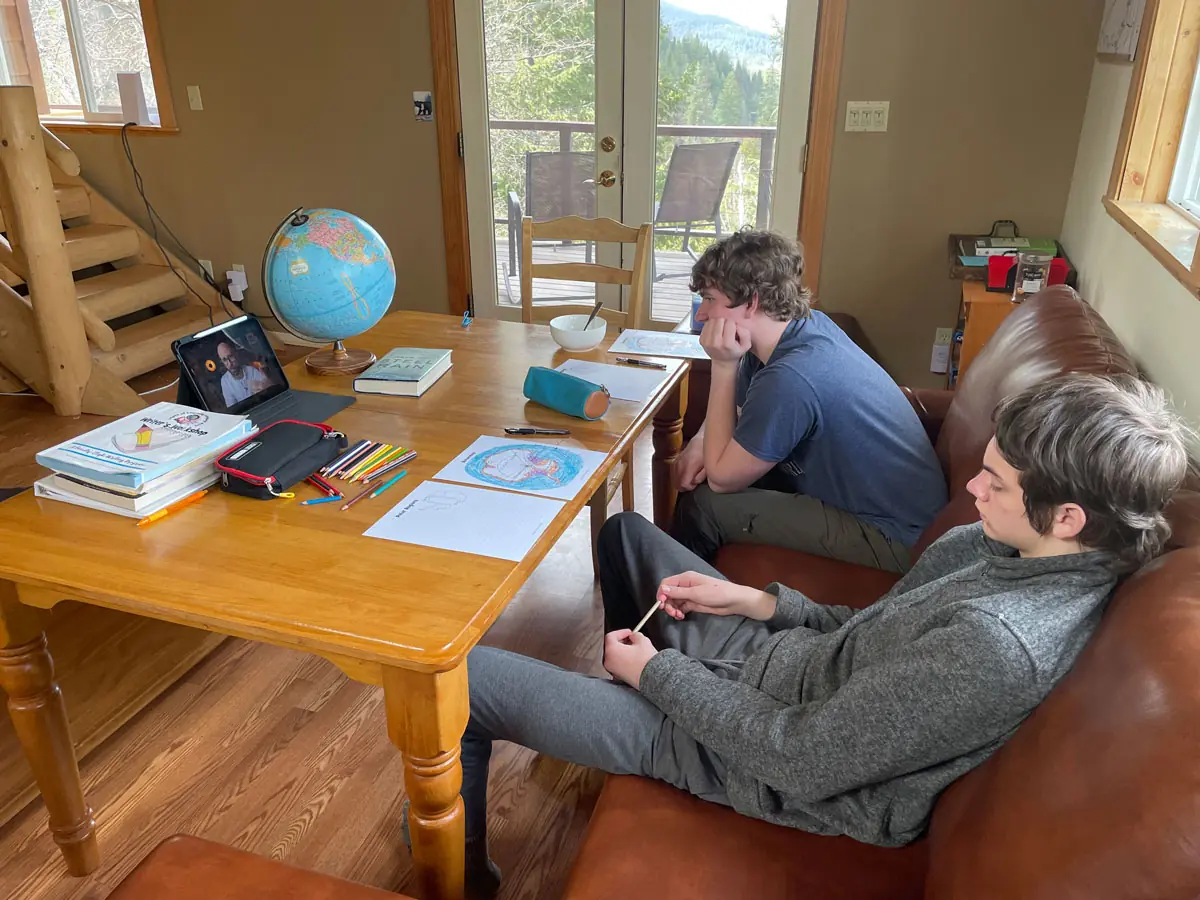Sometime between the 1960s and 1970s in the United States the teaching of geography and history was melded into something called social studies. The purpose was to teach students time and place in a unified way to help them see a picture that was tied to the society they live in today.
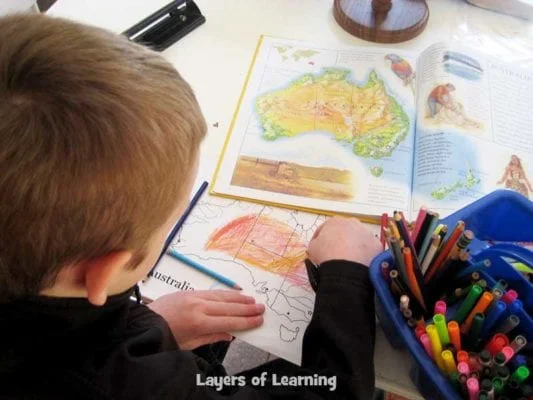
Whatever the intent, the effect has been that American students have no understanding of history or sense of time and they can’t even name the neighboring countries of the world let alone understand the cultures, issues, and point of view of people across the planet.
Watch as Michelle explains why geography ought to be taught and how Layers of Learning does it.
So, What Should Geography Teach?
A good geography curriculum is one that helps students to have a picture of the whole planet as it is today. Adults should not need to look up basic information on a country they just heard about in the news in order to have context. You should know where it is, what its government system is, what some of its major cultural features like language and religion are, and what kind of landscape it is in.
Geography is about landscapes, maps, cultures, and governments. But most of all it is about understanding that one is not the center of the universe. There are many fascinating and wonderful people in the world with many beliefs, ways of life, and societies. There are gorgeous deserts, lush undersea coral reefs, deep dark forests, and endless prairies. This world is a wonderful place and geography is all about that.
Besides, learning about other people helps one to understand oneself in a deep and profound way.
How Does Layers of Learning Teach Geography?
We, Karen and Michelle, have long thought that when geography and history are squished together both of them suffer so we separated them into their own full subjects from the beginning of Layers of Learning way back in 2008 when we started.
Layers of Learning is organized according to the Four Year Cycle where each subject is broken into four years of study and then repeated twice more before graduation.
We divided geography into physical geography, maps, cultures, and governments.
Learning About the Physical World
So in the first Year of the program mentors use the People & Planet course to teach about the physical world including landforms, natural disasters, rocks and soil, environmental issues, climates, water, biomes, and natural resources. Students learn things like why does having access to good ports increase the wealth of a country? Or how can places without good soil still produce food to feed their people? Or how does the presence of natural resources increase the chances of either wealth or exploitation?
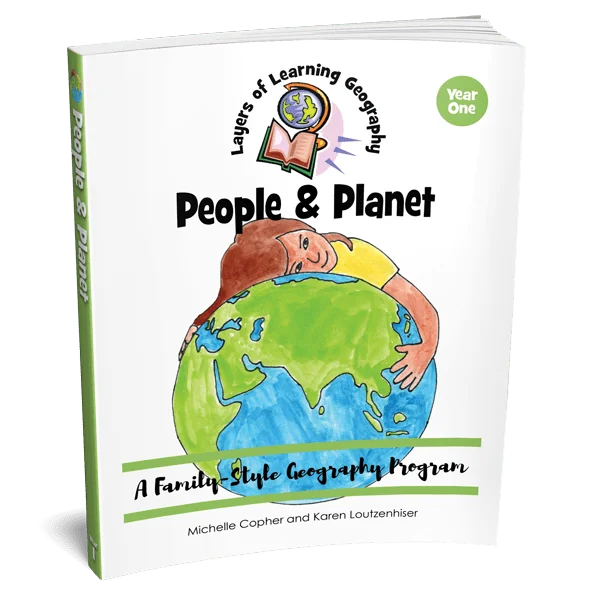
The geography of the physical world ought to include things like the definition of a peninsula, but then it ought to go much deeper into things like the impact of nuclear radiation on remote Pacific Islands.
Maps Matter
Layers of Learning tackles maps in the second course called Mapping Our World. Maps are at the core of geography because geography is about where in the same way that history is about when.
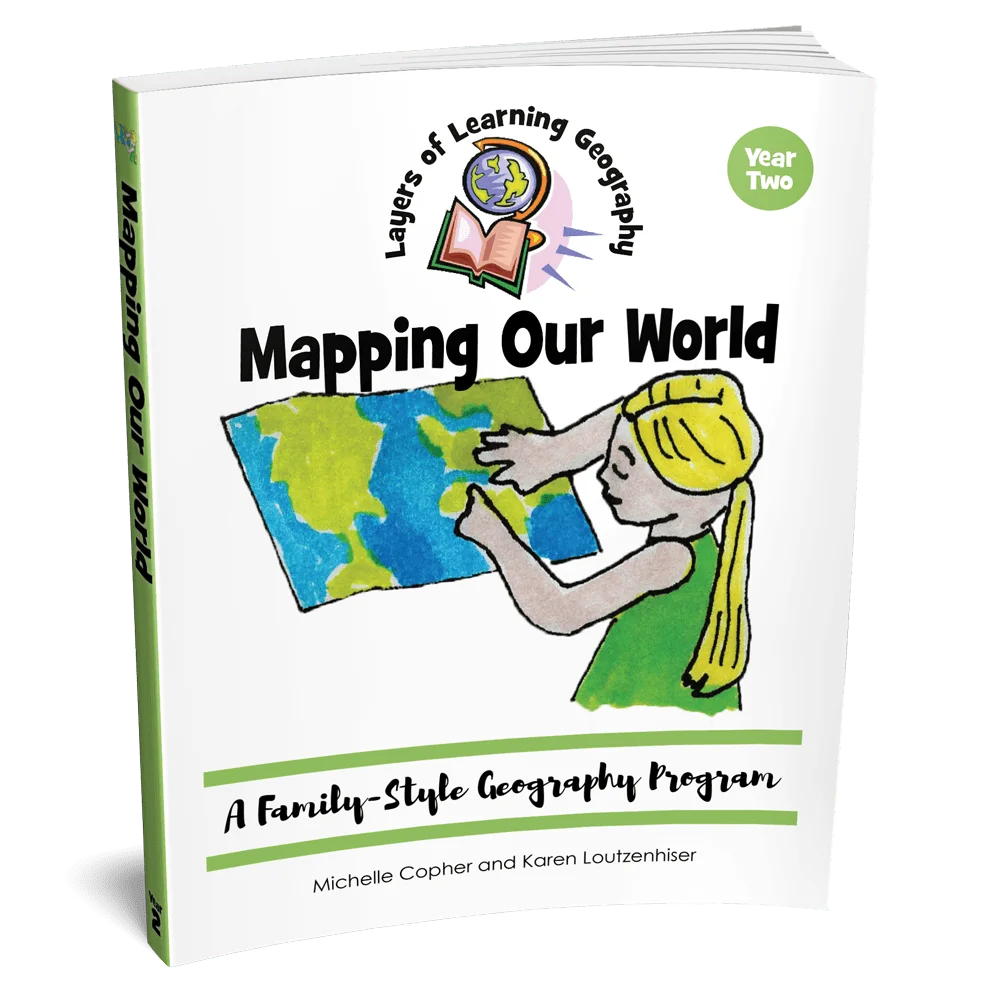
We start with defining a country and why they have borders that we then put on maps. Then we learn about the global grid system of longitude and latitude, how maps are made including keys and scale, map projections and how there isn’t a perfect one but the one you choose depends on your purpose, transportation system and how they are mapped, topographic maps and constantly changing terrain, time zones, the difference between political and physical maps, and finally how to navigate with maps.
Maps and can teach, inform, influence, guide, and they can lie. Students deserve to be taught how they are a tool like any other, to be used for good or ill.
Culture Is Everything
The third Layers of Learning geography course is called World Cultures and as you would expect it is about culture. Culture is the lens that we see the world through. It is our belief systems, our family structures, our language, our history, our clothing, our celebrations, our food. It is everything that we are immersed in every second of every day. And there are cultures all over the world with wildly different ways of doing things.
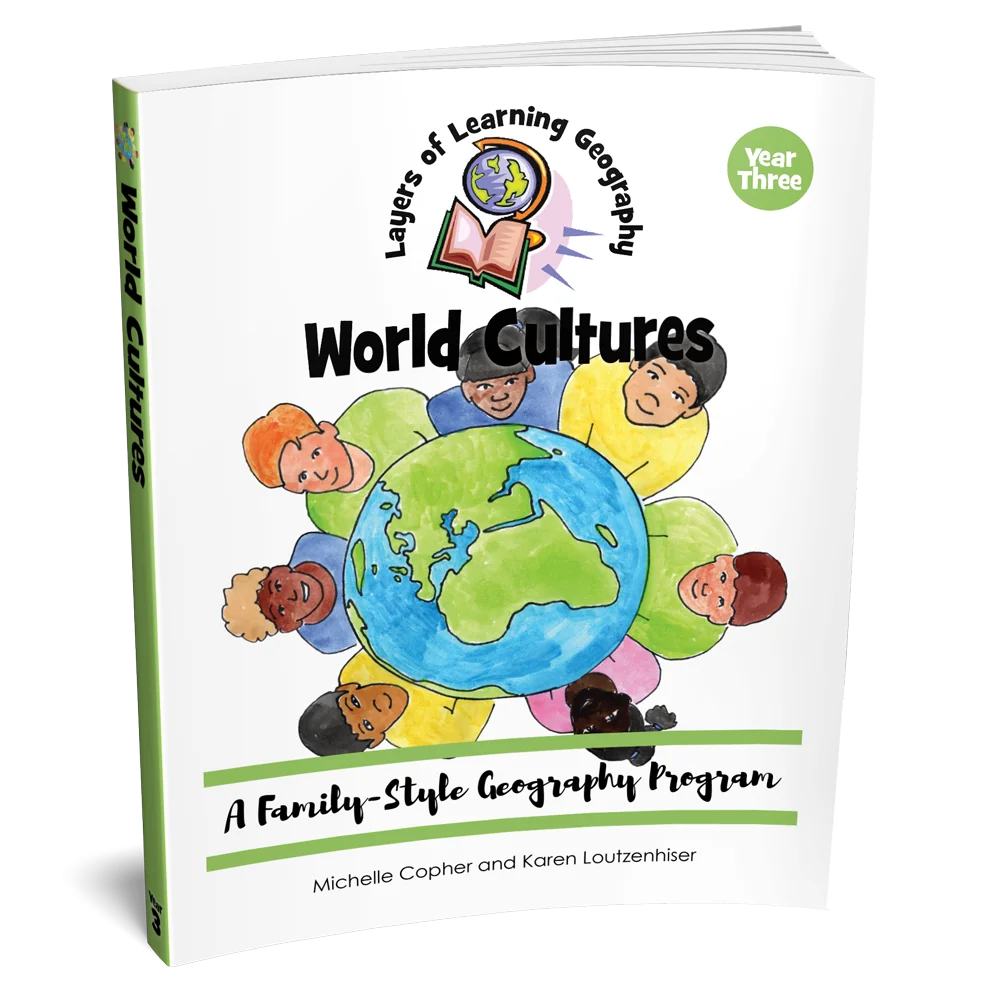
We start with study by asking what is culture, then talking about mores and manners, families, leisure time, world religions, language, myths, rituals and ceremonies, and how culture spreads.
Analyzing these things academically elevates the student from a “we are normal and you are weird” mindset to one of understanding both others and oneself.
Human Systems
The governments and societies and systems people live in affect their lives profoundly for good and ill so this last year of study is People & Place. In this year students study population in terms of where people live and why, cities and their impact on behavior and wealth, industry and agriculture and how they are affected by government policies and the natural world, rich and poor people and rich and poor countries, human migration, war, types of governments, and economic principles.
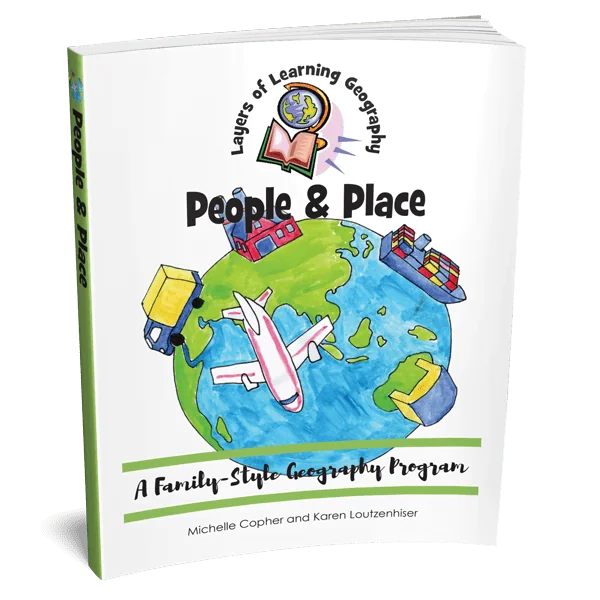
All of these things from naming the continents clear up to figuring out why people go to war are encompassed in geography.
I can’t imagine why you would want your kids to miss out on this.
Get a Free Unit
Choose between the first unit in each Layers of Learning subject to try for free when you sign up for the newsletter.
We never spam and you can cancel your subscription at any time.


